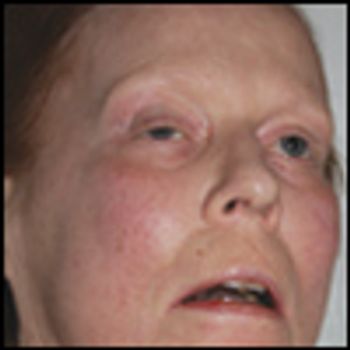
We have long known that many adolescents have chronic pain. A new study highlights just how widespread it is-and the significant impact it can have.


We have long known that many adolescents have chronic pain. A new study highlights just how widespread it is-and the significant impact it can have.

Typically, antihypertensive medications are taken in the morning. But typically does not always equal correct! Preliminary studies have documented that a more appropriate approach would be to take them (or at least some of them) at bedtime.

A recent commentary of mine regarding hypertension was entitled, “Are Prescribing Practices for Antihypertensives Primitive? The Truth Hurts."

In medical school, many of us were taught that ADD and ADHD generally affected boys who would eventually outgrow the disorder. We now know better. Girls have ADD/ADHD. And many children never outgrow the disorder.

When counting sheep fails as first line therapy, what measures can you recommend to help your patient get some sleep?

Twenty years ago, the American College of Rheumatology (ACR) introduced the following clinical criteria for the diagnosis of fibromyalgia (FM) . . .

A variety of effective treatments are available for diabetic peripheral neuropathic pain (DPNP), including topical agents, oral medications, and nondrug approaches. The lidocaine patch 5% is recommended for relatively localized pain.

The treatment of chronic fatigue syndrome (CFS) is mainly supportive. The key to effective management is to establish a therapeutic alliance with patients and to convey a consistent message that their complaints are taken seriously. Although spontaneous recovery is rare, it does occur in some patients with CFS.

Chronic fatigue syndrome (CFS) is a distinct disorder characterized by debilitating and often recurrent fatigue that lasts at least 6 months but more frequently lasts for longer periods. Patients with CFS experience overall physical, social, and mental impairments and may subsequently qualify for medical disability.

How to determine whether opioids are appropriate, what to do about breakthrough pain, and how frequently to monitor.

Dr Schneider addresses myths and misunderstandings about the long-term use of opioids to treat noncancer pain.

A 23-year-old woman presents to the emergency department (ED) with left-sided burning chest pain that radiates to the epigastrium. The pain, which woke her from sleep 12 hours earlier, is intermittent and is not associated with eating or exertion. She had a single bout of nausea and emesis.

Here Dr Scheinfeld provides a pictorial guide to neurotic excoriation, perforating folliculitis, chondrodermatitis nodularis chronica helicis, hyperkeratosis, and intertrigo.

Selective serotonin reuptake inhibitors and other second-generation antidepressants have become common therapeutic options for the management of depression. Although these agents are effective and generally well tolerated, they frequently cause sexual adverse effects that can impact patients’ quality of life, thus ultimately leading to nonadherence to therapy in many cases.

In this podcast, Dr Lieberman discusses the associated features of three specific mental disorders: anxiety, major depressive disorder, and bipolar disorder. He offers practical techniques that can be used in diagnosing each of these disorders and provides suggestions for treatment.

A 56-year-old woman seen during physician’s hospice visit. Stormy course from lupus nephritis, dialysisdependency, repeated episodes of dialysis-catheter–related peritonitis, each treated and followed by Clostridium difficile–associated disease.

Primary care physicians are often the first to see patients with mental health problems and they provide 70% of metal health care to patients. They also write a majority of the prescriptions for antidepressant and antianxiety medications in the United States. This is understandable in light of the fact that physical and mental ailments are often comorbid. But, there may be more to treating a patient who presents with depression than prescribing a pill.

What associated disorders should primary care clinicians be alert for in patients with Parkinson disease?

Physical changes that occur in aging skin (eg, dryness and thinning) can result in pruritus and cause patients to rub, scratch, and pick at their skin. These activities produce various dermatoses and reactive changes in the skin, such as postinflammatory pigmentary alteration. Lichen simplex chronicus (LSC) develops as a physiological cutaneous response to repetitive scratching or rubbing. First-line treatment consists of topical corticosteroids and application of ice to reduce the sensation of itching. Like LSC, prurigo nodularis results from rubbing and scratching the skin. Treatment is similar; however, intralesional corticosteroids and UV therapy play more of a role because prurigo nodularis is more intensely pruritic than LSC.

Doctors, especially primary care doctors, love stories. We love hearing them from patients and telling them to one another. “Anecdotal learning” it’s called by some (somewhat derisively because it’s not science).

The multiple, symmetrically distributed, soft, nontender swellings on the shoulders and torso of a 56-year-old Hispanic man are characteristic of multiple symmetric lipomatosis (MSL), also known as Madelung disease or Launois- Bensaude syndrome.

I understand that patients with refractory hypertension have a high risk of obstructive sleep apnea (OSA) syndrome. Can this be screened for in an office setting?

Allergic rhinitis is highly prevalent; about 20% of adults in the United States and 25% of children worldwide are affected. It is a major societal expense, with direct costs, attributable to physician visits and medications, of up to $5 billion per year, and indirect costs, mainly stemming from lost productivity, of up to $9.7 billion per year. In the United States, allergic rhinitis results in 3.5 million lost workdays and 2 million lost schooldays each year.

The ability to recognize cases of the new H1N1 flu and distinguish these from seasonal influenza and other respiratory illnesses is perhaps the overriding concern of primary care practitioners. Prompt and accurate identification of this entity is the key to both effective management of individual illness and effective public health measures.

About half of children with ADHD also meet the diagnostic criteria for ODD but the disorders have different etiologies and respond to different types of treatment.